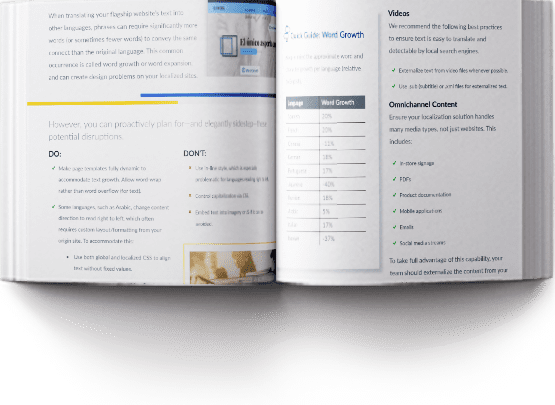Creating an intuitive UX for global customers is essential to creating a positive online experience.
But when a translated website isn’t designed with localization in mind, international users can wind up experiencing partially-translated content, confusing or broken menu links, and other functionality problems.
Following the best practices in this e-book can help designers, developers and content creators optimize their websites for localization. You’ll discover:
- Unique ways to design websites to accommodate the nuances of localization
- How to avoid potential functional disruptions and design problems
- Coding considerations for multimedia and omnichannel content
The issues that are created when designers don’t follow these best practices can lead to customer confusion—and can even drive them away for good.

Sidestep these pitfalls with the actionable insights in this e-book, including:
- Separating text from images and multimedia assets, rather than embedding the text in flattened .jpgs
- Designing fully dynamic page templates to allow text-wrap and accommodate word growth
- Ensure your translation vendor can handle many media types, including PDFs, emails and mobile applications
Remember: Superior translation providers can help guide you through these best practices, ensuring continual functionality for your multilingual sites—and significantly lowering translation costs.
Download the e-book



